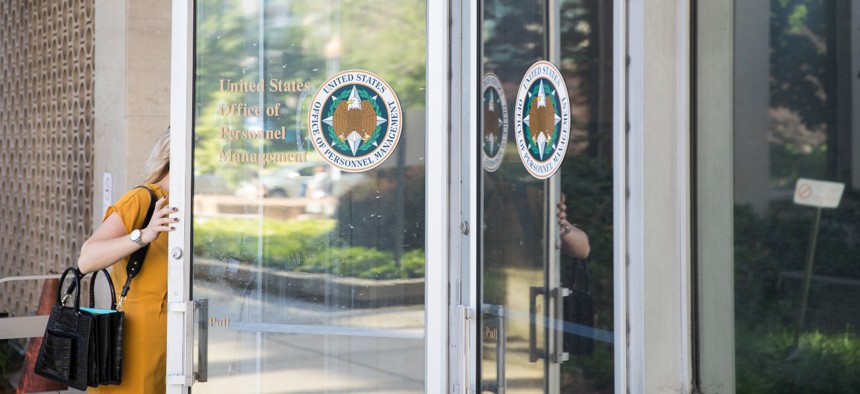
OPM should address its own shortcomings to be more effective in helping other agencies, a watchdog found. Sarah Silbiger for The Washington Post via Getty Images
Skills Gaps Within OPM’s Own Workforce Could Make It Less Able to Help Others
The government’s human resources agency has outlined an ambitious agenda to make sure agencies are fully staffed, with the people who have the skills necessary for their jobs.
The Government Accountability Office this week reported that the federal government’s human resources agency has begun making progress on efforts to close governmentwide skills gaps within the federal workforce, but that the Office of Personnel Management must do more to address its own shortfalls before it can fully help others.
Strategic human capital management has been on the government watchdog agency’s much-watched High Risk List since 2001, in part due to a variety of skills gaps that exist across government, referring to both staffing shortages in key jobs and instances where employees lack mission critical skills needed to do their jobs.
In a report released this week, GAO touted the Biden administration’s advancement of human capital management as a governmentwide priority through the 2021 president’s management agenda, as well as efforts to reform OPM into a strategic leader on human capital issues, rather than an agency focused more on transactional compliance, and rejuvenating the Chief Human Capital Officers Council, which had ceased OPM-led regular meetings in 2020.
GAO also hosted a forum for chief human capital officers to discuss the biggest challenges hindering them from addressing skills gaps within their agencies. Those officials reported increased competition both with the private sector and other agencies, uncertainty related to the annual appropriations process, as well as compensation differences across federal agencies—such as when only some agencies are granted a special salary rate for an in-demand position—as contributing to their difficulties in recruiting and retaining qualified employees.
Those same officials said that OPM’s ongoing efforts to improve workplace and pay flexibilities, as well as to streamline regulations and guidance to simplify the hiring process would be “most useful” in helping agencies close their skills gaps.
“Some participants said their agencies’ limited use of workplace and pay flexibilities put them at a recruiting and hiring disadvantage over private sector and other governmental agencies that offer these flexibilities,” GAO wrote. “Participants noted that the federal government should promote flexibilities available to potential employees. For example, OPM recently issued telework and remote work guidance. It encourages agencies to leverage these workplace flexibilities for suitable positions as tools to help attract, recruit and retain the best possible workforce.”
But OPM’s efforts to help agencies close their skills gaps could be endangered by skills gaps within the HR agency’s own workforce. Of the 11 objectives within OPM’s current strategic plan dedicated to addressing governmentwide skills gaps, GAO found that the agency’s existing skills gaps imperil nine of them. And thus far, OPM has not established an action plan to deal with that risk.
“We reviewed [OPM’s draft human capital operating plan] and found it did not explicitly describe all the agency-specific skill and competency gaps that must be closed using agency selected human capital strategies, per OPM guidance,” the report stated. “We also found that OPM did not clearly define performance goals and measures related to closing its skills gaps . . . Until OPM develops an action plan—whether as part of its HCOP or a separate effort—the agency lacks important information to guide its efforts to implement, measure and monitor its activities aimed at closing its skills gaps.”
GAO recommended that OPM establish an action plan to address its skills gaps, and that the OPM director should document and monitor efforts to address the risks that those skills gaps pose for achieving the objectives outlined in the agency’s strategic plan. In response, OPM Chief Human Capital Officer Carmen Garcia concurred with both recommendations, and outlined a number of steps the agency has planned to address the watchdog’s concerns.
“In the spring of 2023, OPM will be conducting a human capital review with OPM Human Resources,” Garcia wrote. “Based on the [review] discussion, OPM will develop and implement an action plan to address our agency specific skills and competency gaps via selected human capital strategies. We will leverage a cross-agency working group of senior leadership to ensure that the interests of all stakeholders are considered and that the necessary resources are available to implement the action plan.”







